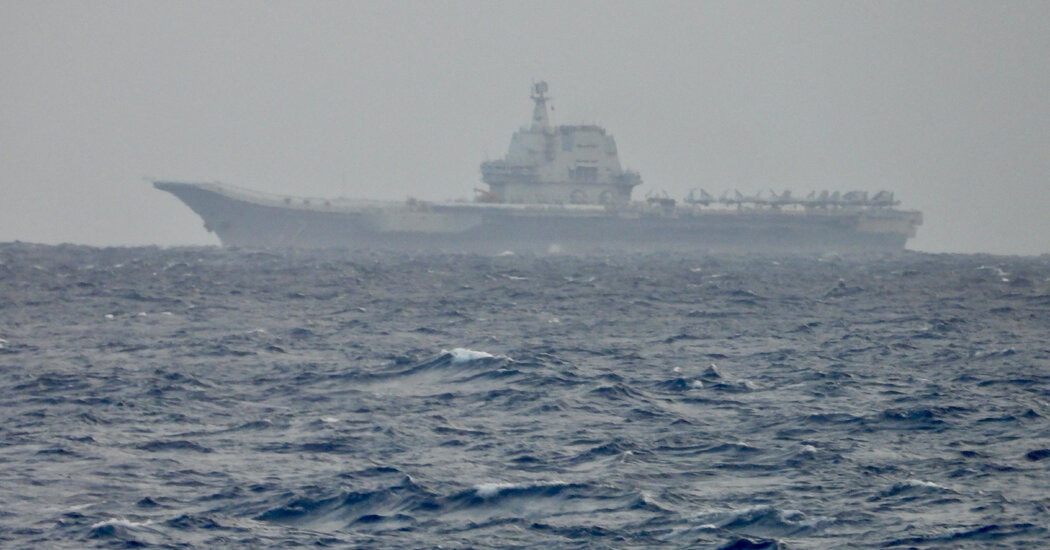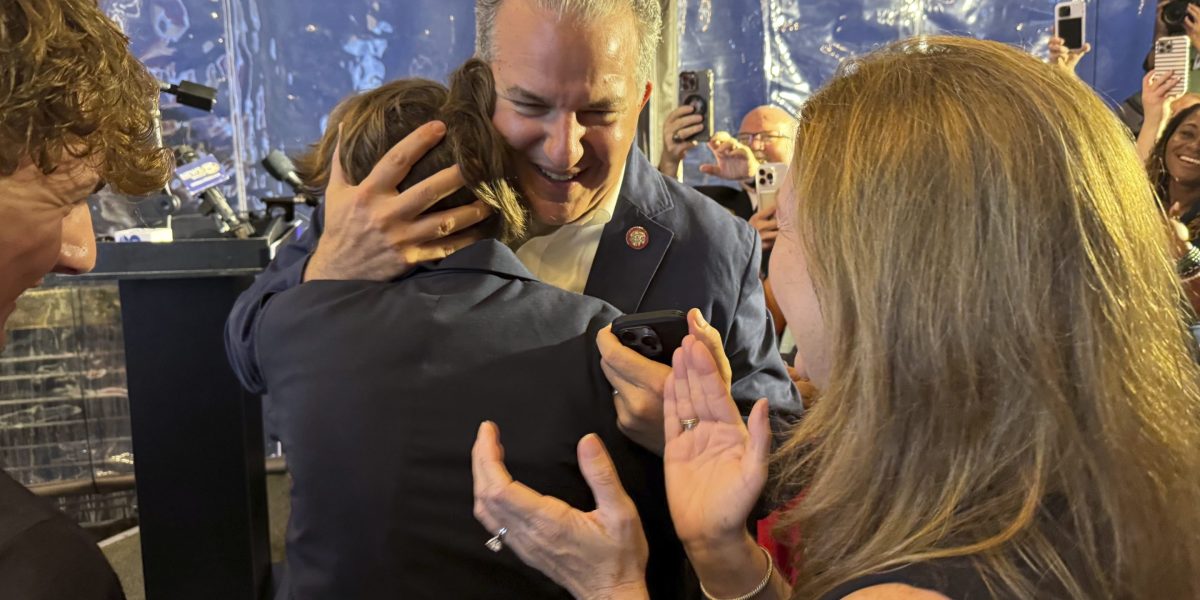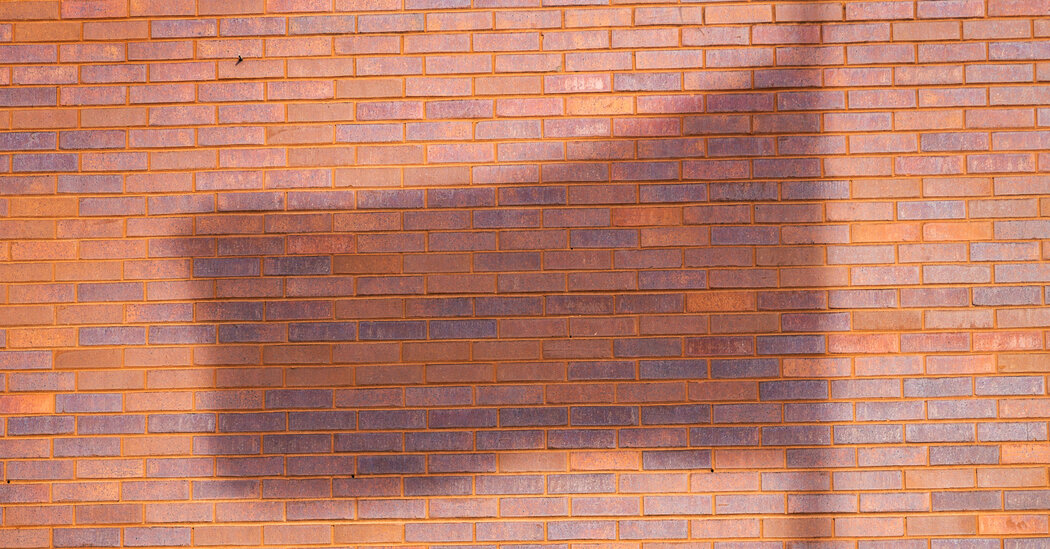China held military exercises around Taiwan for a second day on Wednesday, sending warships and fighter planes near the island in what Beijing said was a warning to its president, Lai Ching-te, after he called China a “foreign hostile force.”
The second day of exercises would focus on the Chinese military’s abilities to control and seal off seas and skies around Taiwan, Senior Col. Shi Yi, a spokesman for the People’s Liberation Army regional command that oversees Taiwan, said in a statement. Senior Colonel Shi also said that in the East China Sea — farther from Taiwan — Chinese forces held live-fire long-distance strikes on “simulated targets of key ports and energy facilities.”
Chinese officials have said that the display of military might was prompted by a speech that Mr. Lai gave on March 13, in which he called China a “foreign hostile force” and laid out 17 measures that he said would combat deepening Chinese subversion and spying in Taiwan. Those included restoring military tribunals to hear cases against military personnel accused of spying. Beijing claims Taiwan as its territory, and officials describe Mr. Lai as an independence activist fundamentally opposed to their goals.
On Wednesday, Taiwan’s Ministry of National Defense said that 13 Chinese navy ships had been deployed on all sides of Taiwan, and another eight Chinese warships, including an aircraft carrier, were about 190 nautical miles west of the island. China had also deployed 10 coast guard ships, which often work closely with the military, around Taiwan and its smaller islands. Earlier in the day, the Taiwanese defense ministry said Chinese military aircraft had flown 76 sorties near Taiwan in the previous 24 hours.
Maj. Gen. Meng Xiangqing, a Chinese military scholar who often serves as a spokesman, said that the exercises were intended to warn Taiwan of the risks and costs of a real blockade.
“A joint blockade would use our big weaponry to stop Taiwan independence separatists from escaping, and prevent outside assistance from entering” the island, he said in a video on China’s main military news website. “If Taiwan loses its sea supply lines, its domestic resources will be quickly exhausted, and its social order will descend into chaos.”
But despite Beijing’s fiery language and sizable military display, experts said that the exercises appeared intended to intimidate Taiwan without tipping over into a wider confrontation. Mr. Lai and his Democratic Progressive Party deny that Taiwan is a part of China — a key premise of Beijing’s claim that the island is its territory — and officials in Beijing have already vehemently denounced Mr. Lai’s recent speech. On Tuesday, Chinese media published cartoons that depicted Mr. Lai as a parasitic grub.
“It’s trying to get in closer to Taiwan to exert more psychological pressure,” Su Tzu-yun, another researcher at the Institute for National Defense and Security Research, said of China’s latest exercises.
While Beijing has linked the exercises to Mr. Lai’s comments, Mr. Su and other experts said, China’s leaders also appeared to be sending an implicit message to the Trump administration. Mr. Lai has sought to maintain U.S. support for Taiwan during President Trump’s term, including by promising to raise its military spending to more than 3 percent of the island’s economic output this year.
“The publicity around the exercise likely also has the U.S. in mind — they want to persuade the Trump administration that Lai is a troublemaker and to deter the U.S. from maintaining high levels of support to Taiwan,” said Amanda Hsiao, an analyst for the Eurasia Group who monitors Chinese foreign policy and China-Taiwan tensions.
The exercises came days after the U.S. defense secretary, Pete Hegseth, visited Tokyo to discuss strengthening military ties with Japan. Mr. Hegseth said there that the Trump administration would focus on countering Chinese power, including its efforts to squeeze Taiwan.
“America is committed to sustaining robust, ready and credible deterrence in the Indo-Pacific, including across the Taiwan Strait,” Mr. Hegseth said in a news conference with Japan’s defense minister, Gen Nakatani. Mr. Hegseth has also issued internal guidelines in the Pentagon that say U.S. forces must focus on deterring China from trying to seize Taiwan by force, The Washington Post reported.
Still, China may not have an appetite right now for extended military exercises that could deepen the divisions between the Trump administration and China’s leader, Xi Jinping. Mr. Xi is already squaring off with Mr. Trump over additional U.S. tariffs on Chinese goods that were imposed last month, with possibly more tariffs to come this week. The official Chinese statements about the latest exercises did not mention the United States.
“China is definitely interested in not showing weakness,” Wen-Ti Sung, a researcher in Taiwan and a nonresident fellow with the Atlantic Council’s Global China Hub, said of Mr. Xi’s approach to the Trump administration. “But China will respond with just enough firmness to make sure that an off ramp for it still remains.”















